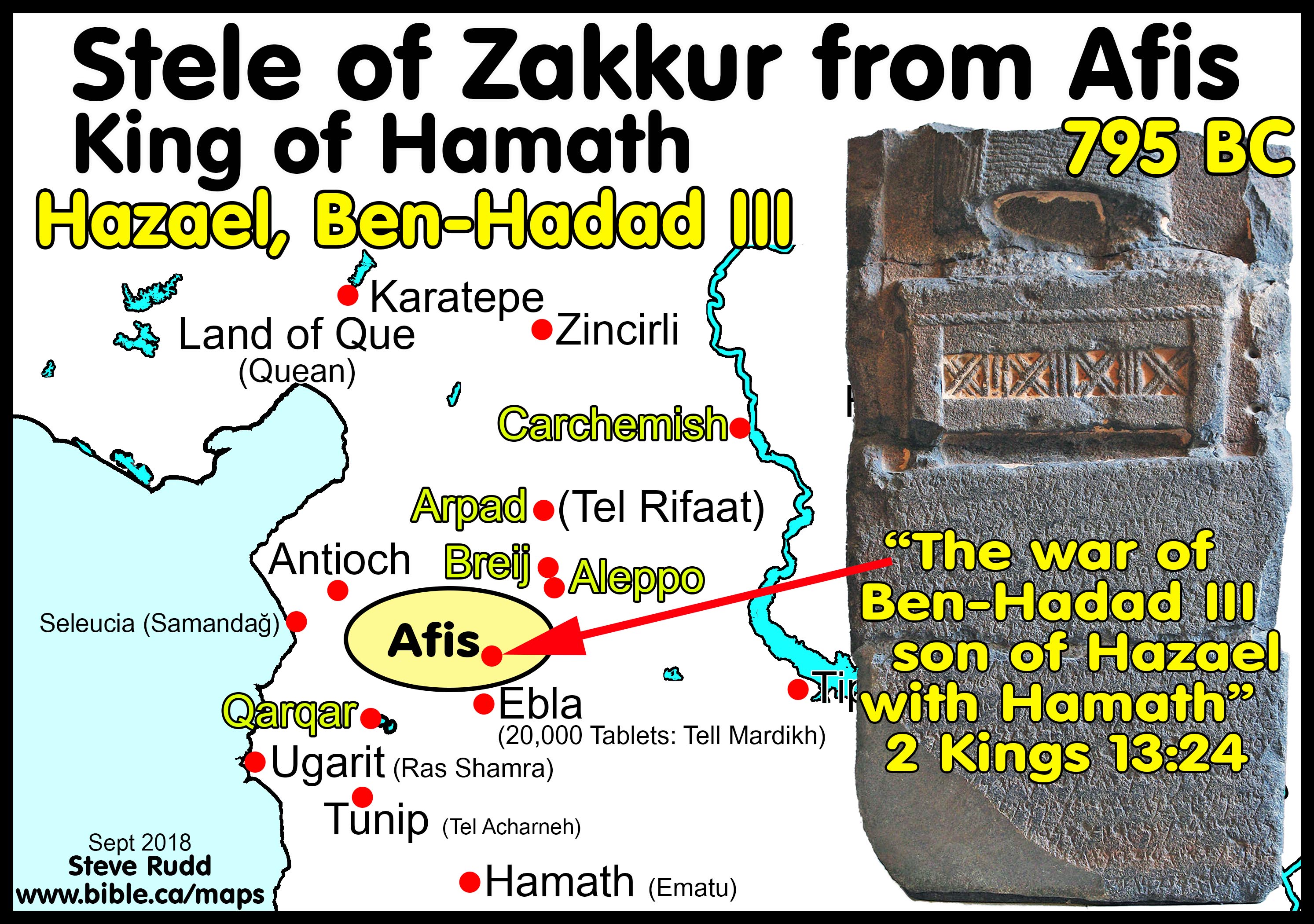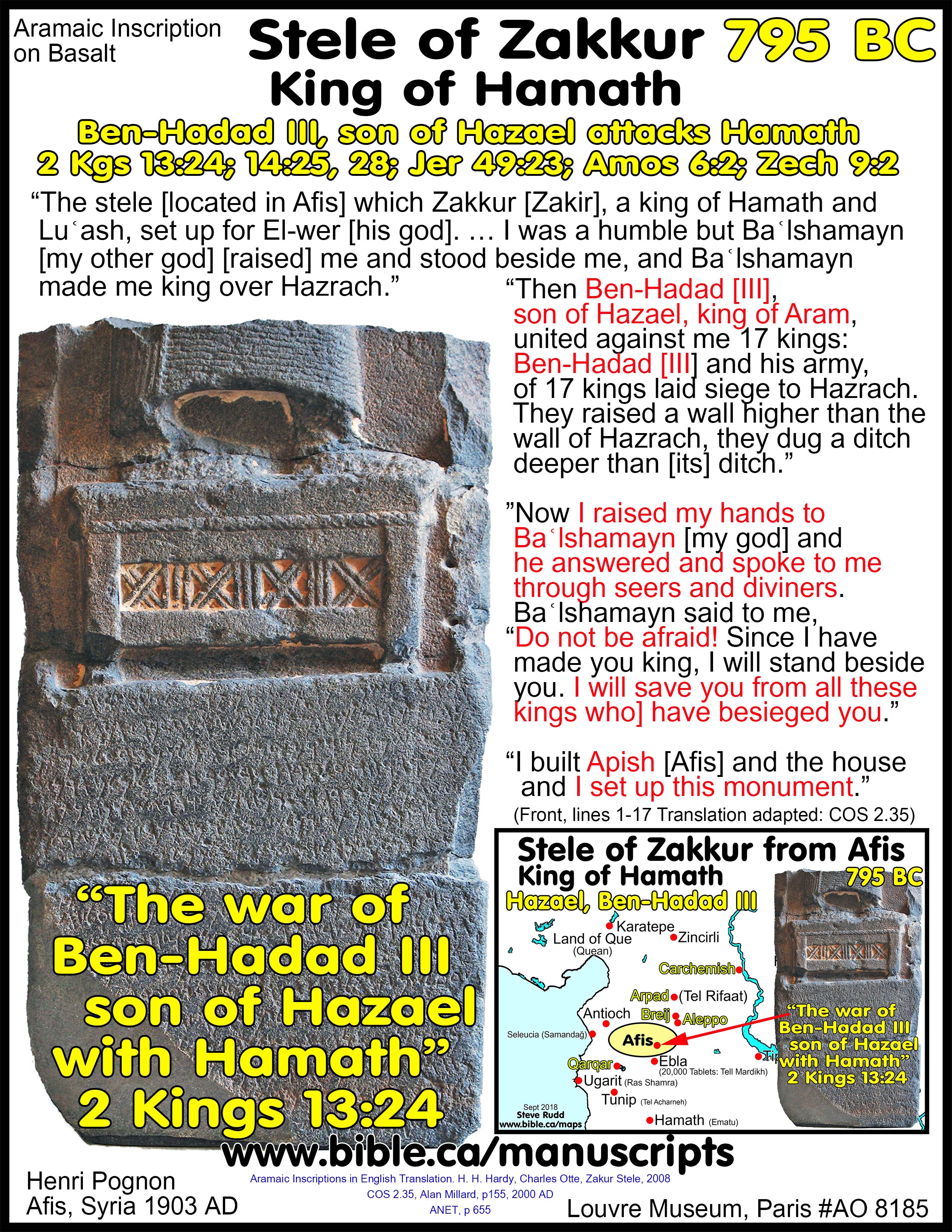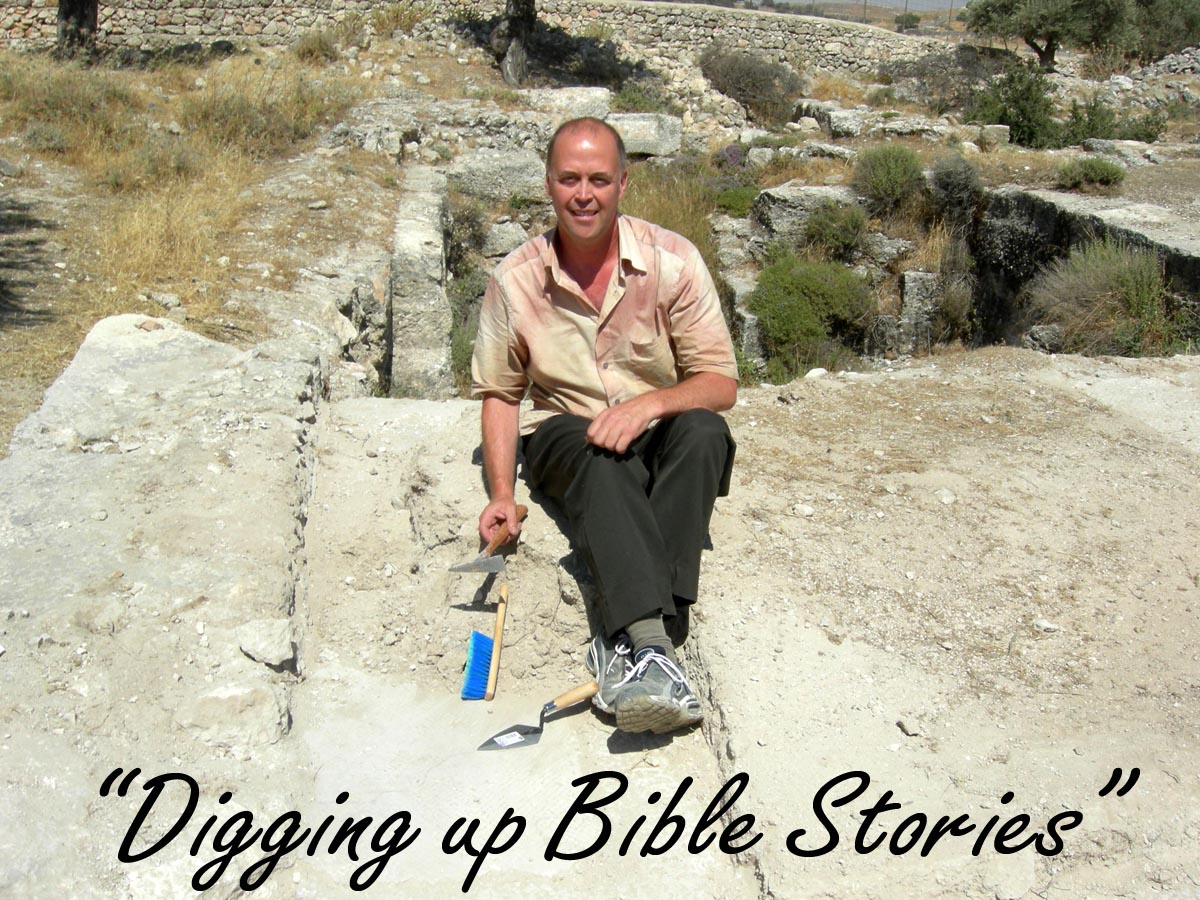Stele of Zakkur, King of Hamath: 795 BC
Hazael, Ben-Hadad III and the war of Hamath
|
Stele of Zakkur, king of Hamath |
|
|
Date of inscription |
795 BC |
|
Glyptic object |
Aramaic Inscription on Basalt |
|
Discovery |
Henri Pognon Afis, Syria 1903 AD |
|
Current location |
Louvre Museum, Paris #AO 8185 |
|
Bible names |
Hazael, Ben-Hadad III (Mari) |
|
Historic events |
Battle against Hamath vs. Ben-Hadad III and his coalition of 17 city kings. |
|
Digging up Bible stories! “Then Ben-Hadad [III], son of Hazael, king of Aram, united against me 17 kings: Ben-Hadad [III] and his army, of 17 kings laid siege to Hazrach. They raised a wall higher than the wall of Hazrach, they dug a ditch deeper than [its] ditch.” (Front, lines 2-14)
“What we read in the book, we find in the ground” |
Introduction:
1. Ben-Hadad III (Mari) is the son of Hazael and he attacks the country of Hamath with a coalition of 17 city states.
a. Zakkur (or Zakir) is the king of Hamath and he survives the attack then records the events in the stele, named after him: Zakkur Stele.
2. Zakkur relies on his pagan god Baʿlshamayn to win the battle:
a. “Now I raised my hands to Baʿlshamayn (pagan god) and Baʿlshamayn answered me. Baʿlshamayn [spoke] to me through seers and diviners. Baʿlshamayn said to me, “Do not be afraid! Since I have made [you king, I will stand] beside you. I will save you from all [these kings who] have besieged you.” [Baʿlsha-mayn] also said to [me, “] all these kings who have [besieged you ] and this wall.”
b. Through his royal pagan prophets the pagan god Baʿlshamayn replied: “Do not be afraid, I will save you!”
c. Zaddur won the battle and gave a chunk of rock named Baʿlshamayn the credit while the one true God, YHWH, creator of the universe, laughed.
3. Bible references:
a. Ben-Hadad III was the son of Hazael who attacks Hamath: 2 Kings 13:24
b. Hamath is in the Bible: 2 Kings 14:25, 28; Jer 49:23; Amos 6:2; Zech 9:2
4. About the Zakkur Monument:
a. “H. Pognon bought parts of a basalt stele in north Syria which he published in 1907–8; they are now in the Louvre (AO 8185). Now 1.03 m. high, 62 cm. wide, the squared block was originally taller, the upper part carved with a figure in relief of which only the feet resting upon a dais or stool survive. Below the sculpture an inscription was engraved in Aramaic, starting on the front (a), continuing on the left (b) and right sides (c). This “memorial” text is damaged and incomplete. Circumstantial evidence points to a date shortly after 800 bce.” (COS 2.35, Alan Millard, p155, 2000 AD)
b. “This historical inscription, dating from the early years of the eighth century b.c, was composed in connection with the dedication of a statue of Ilu-Wer, an avatar of Hadad. It was found in 1904 in a place about twenty-five miles- southwest of Aleppo which in modern times is called Afis and which appears to have been mentioned in this inscription as Apish.” (ANET, p 655)
5. Sources:
a. ANET, p 655
b. COS 2.35, Alan Millard, p155, 2000 AD
c. Aramaic Inscriptions in English Translation. H. H. Hardy, Charles Otte, Zakur Stele, 2008
Translation of the Zakkur stele:
|
|
|
|
|
Title (A line 1) The stele [located in Apish] which Zakkur [Zakir], a king of Hamath and Luʿash, set up for El-wer [his god]
Record of divine rescue (A lines 1–17) I am Zakkur, king of Hamath and Luʿash. I was a humble but Baʿlshamayn [my other god] [raised] me and stood beside me, and Baʿlshamayn made me king over Hazrach.
Then Ben-Hadad [III], son of Hazael, king of Aram, united against me s[even]teen kings: Ben-Hadad [III] and his army, Bar-Gush and his army, the king of Que and his army, the king of ʿAmuq and his army, the king of Gurgum and his army, the king of Samʾal and his army, the king of Meliz and his army [ ] seven[teen], they and their armies. All these kings laid siege to Hazrach. They raised a wall higher than the wall of Hazrach, they dug a ditch deeper than [its] ditch. Now I raised my hands to Baʿlshamayn and Baʿlshamayn answered me. Baʿlshamayn [spoke] to me through seers and diviners. Baʿlshamayn said to me, “Do not be afraid! Since I have made [you king, I will stand] beside you. I will save you from all [these kings who] have besieged you.” [Baʿlsha-mayn] also said to [me, “] all these kings who have [besieged you ] and this wall [ ].”
Building inscription (B lines 1–15) [ ] Hazrach [ ] for chariot [and] horseman [ ] its king within it (?). I [built] Hazrach and added [to it] all [ ] defenses. [ ] and I put x x[ ] x x[ ] forts on every side. [I] built shrines in a[ll] my [land?]. I built [ ]x Apish and [ ] the house [ ] and I set up this monument before [El-wer] and w[rote on] it my achi[evements].
Curses (B lines 16–28, C 1, 2) [In future who]ever removes from this monument wha[t Zakkur king of Hamath [and Lu‘ash] has [accomplished] and who[ever re]moves this monument from [befo]re El-wer and takes it away fr[om] its [place], or whoever throws it in [ ] x [ ] x [ May Baʿlshamayn and El[-wer ] and Shamash and Shahar [ ] and the gods of heav[en and the god]s of earth and Ba ʿlX[ ] x and x [ ] x x [ ] (C) [ ] the name of Zakkur and the name of [ ]. Translation adapted from COS 2.35, Alan Millard, p155, 2000 AD |
|
|
|
Conclusion:
1. Here we have an archeological monument that dates to 795 BC which names the Bible kings Ben-hadad III (Mari) and his father Hazael.
2. What you read in the book, you find in the ground! Find me a church to attend in my home town this Sunday!
By Steve Rudd: Contact the author for comments, input or corrections.



